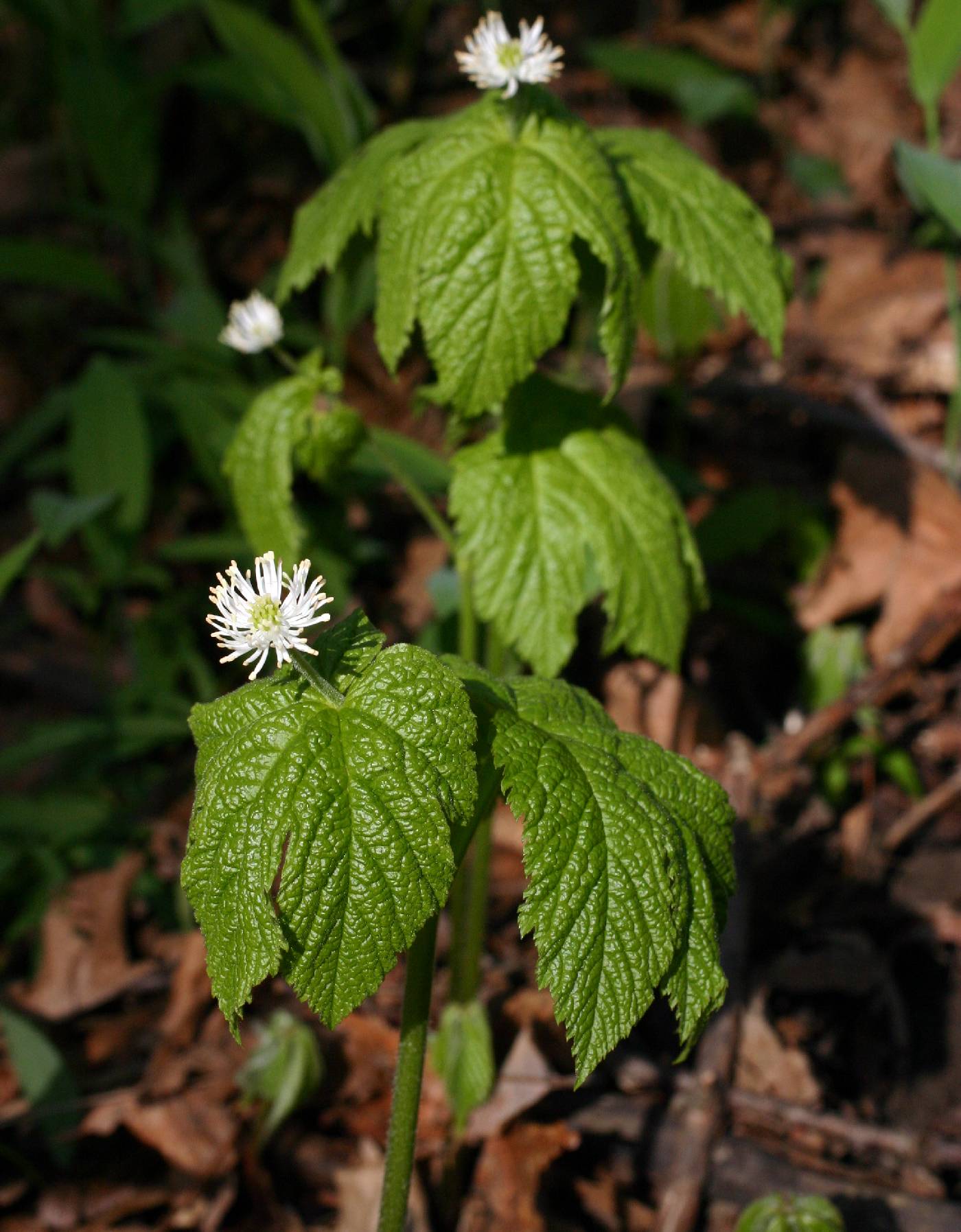Hydrastis
|
Family: Ranunculaceae |
Herbs , perennial, from creeping, yellow, thick rhizomes. Leaves basal and cauline, simple, petiolate; cauline leaves alternate. Leaf blade palmately 3-9-lobed [variously divided], broadly cordate-orbiculate, margins serrate. Inflorescences terminal, solitary flowers; bracts absent. Flowers bisexual, radially symmetric; sepals not persistent in fruit, 3, greenish white to creamy white, plane, ovate, oval, or elliptic, 3.5-7 mm; petals absent; stamens 50-75; filaments abruptly narrowed near apex; staminodes absent between stamens and pistils; pistils 5-15, simple; ovules 2 per ovary; style short. Fruits berries, aggregate, sessile, spheric, sides not veined; beak terminal, ± straight, 0.6-1 mm. Seeds black, ellipsoid, smooth, lustrous. x = 13. Many classifications have included Hydrastis within Ranunculaceae (A. Cronquist 1981; W. C. Gregory 1941; O. F. Langlet 1932; M. Tamura 1963, 1968, 1993). Recent workers (H. Tobe and R. C. Keating 1985; A. L. Takhtajan 1987), however, have assigned Hydrastis to its own family, intermediate between Ranunculaceae and Berberidaceae. Phylogenetic studies by S. B. Hoot (1991) confirmed the isolated position of Hydrastis and suggested that characteristics such as the following justify its exclusion from Ranunculaceae: undifferentiated mesophyll, xylem straight (instead of V-shaped) in cross section, scalariform perforations in the vessels, micropyle defined by two integuments, pollen with a distinct striate-reticulate tectum, and a base chromosome number of x = 13 (as opposed to 6, 7, 8, or 9). C. S. Keener (1993) challenged these conclusions, stating that features such as scalariform perforations in vessels, striate-reticulate pollen, and the micropyle defined by two integuments are found in other genera within Ranunculaceae. Only straight xylem in cross section and the base chromosome number are distinctive. Whether these features warrant segregation of Hydrastis into its own family is debatable. Decisions involving the circumscription of this genus await a molecular study involving Berberidaceae, Ranunculaceae, and related families.
Sep 3, petaloid, falling when the fl opens; pet none; stamens and pistils numerous; styles very short; ovules 2; berries dark red, 1-2-seeded, forming a head; rhizomes knotty, yellow, containing berberine; perennial herbs with alternate lvs and a solitary, terminal fl. 2, the other Asian. Gleason, Henry A. & Cronquist, Arthur J. 1991. Manual of vascular plants of northeastern United States and adjacent Canada. lxxv + 910 pp. ©The New York Botanical Garden. All rights reserved. Used by permission. |

